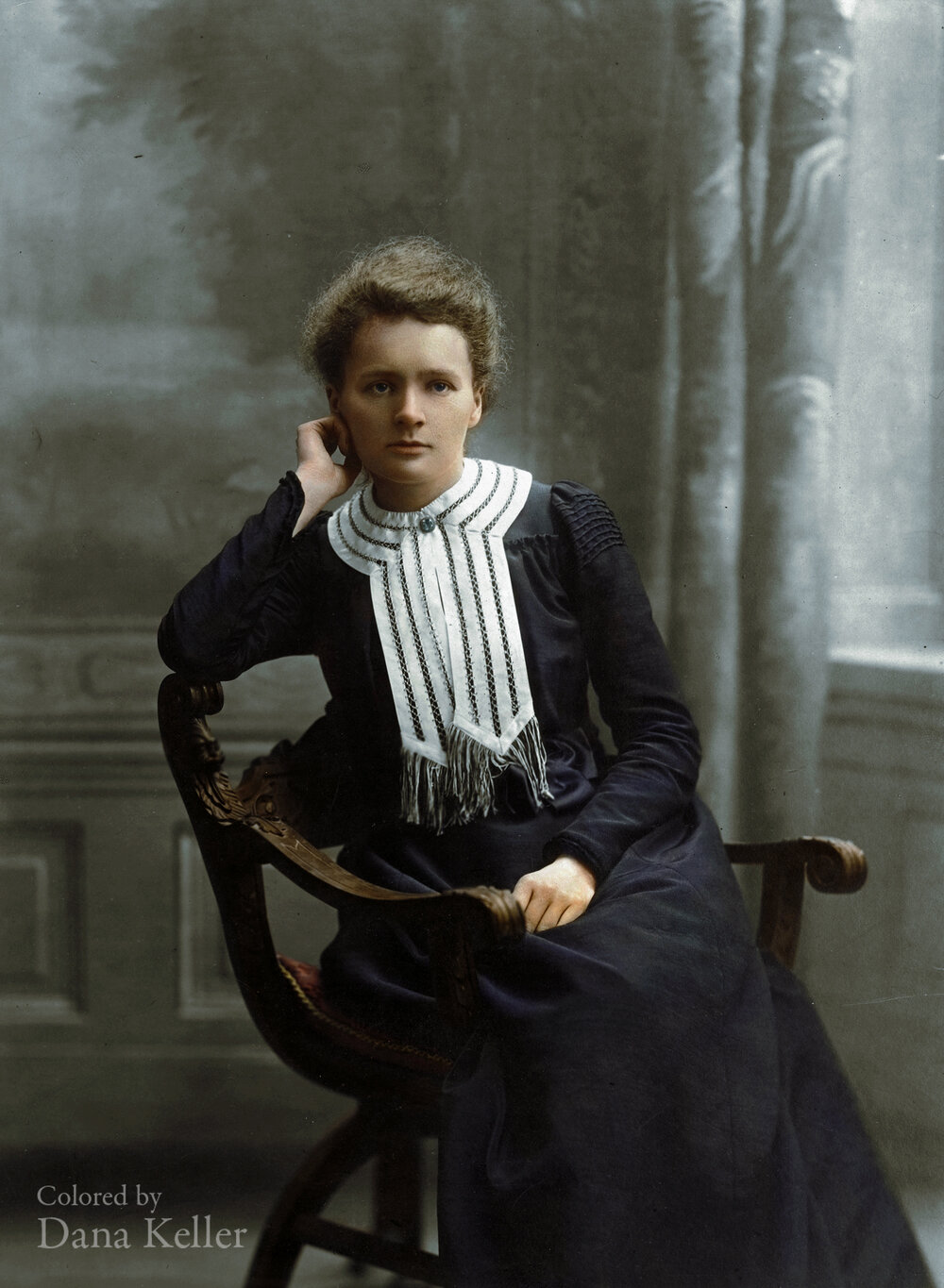Marie Curie
Physicist and Nobel Prize Winner
Marie Curie is kind of a big deal. She was the first woman ever to win a Nobel Prize, the first and only woman to win the Nobel Prize twice, and the only person to win the Nobel Prize in two scientific fields. In 1903, she won the Nobel Prize in Physics along with her husband, Pierre Curie, and physicist Henri Becquerel for their work developing the theory of "radioactivity"—a term she coined. She went on to win another Nobel Prize in 1911 for her discovery of the radioactive elements polonium and radium.
Born in 1967 in Poland, the daughter of a secondary-school teacher, she received scientific training from her father. In 1891, she went to Paris to continue studying at Sorbonne, obtaining Licenciateships in Physics and Mathematics. It was here in 1894 that she met her husband, Pierre Curie, Professor at the School of Physics. They were married a year later. After his death in 1906, she took his place as Professor of General Physics in the faculty of Sciences, the first time a woman had ever held this position.
The Curies became research workers at the School of Chemistry and Physics in Paris. It was here that they began the work in the field of radioactive substances, recently discovered by Henri Becquerel. He found that rays of Uranium passed through solid matter. Marie noticed that samples of the mineral called pitchblende, containing uranium ore, were much more radioactive than the pure element uranium. Marie was therefore convinced that she had discovered a new chemical element, but other scientists doubted her results. Using acids to distill this unknown element, they eventually extracted a black powder 330 times more radioactive than uranium, which they named polonium. It earned its place as number 84 on the elemental table.
After having extracted polonium from the pitchblende, they realized that the liquid leftover after its removal was still radioactive. Further investigation revealed the presence of a substance they named radium. The work required to extract radium was physically demanding, and being radioactive, we can only assume their symptoms of ill-health were symptoms of radiation sickness. In 1911, Sorbonne built its own radium institute for studying radioactivity and the treatment of cancer. During World War 1 Marie Curie developed the first mobile X-Ray unit used to diagnose injuries on the battlefields.
She received numerous awards, prizes, and honorary degrees for her contributions to cancer research and imaging technology.
Powerful Quotes by a Powerful Woman
“Life is not easy for any of us. But what of that? We must have perseverance and above all confidence in ourselves. We must believe that we are gifted for something and that this thing must be attained.”
“Have no fear of perfection; you’ll never reach it.”


